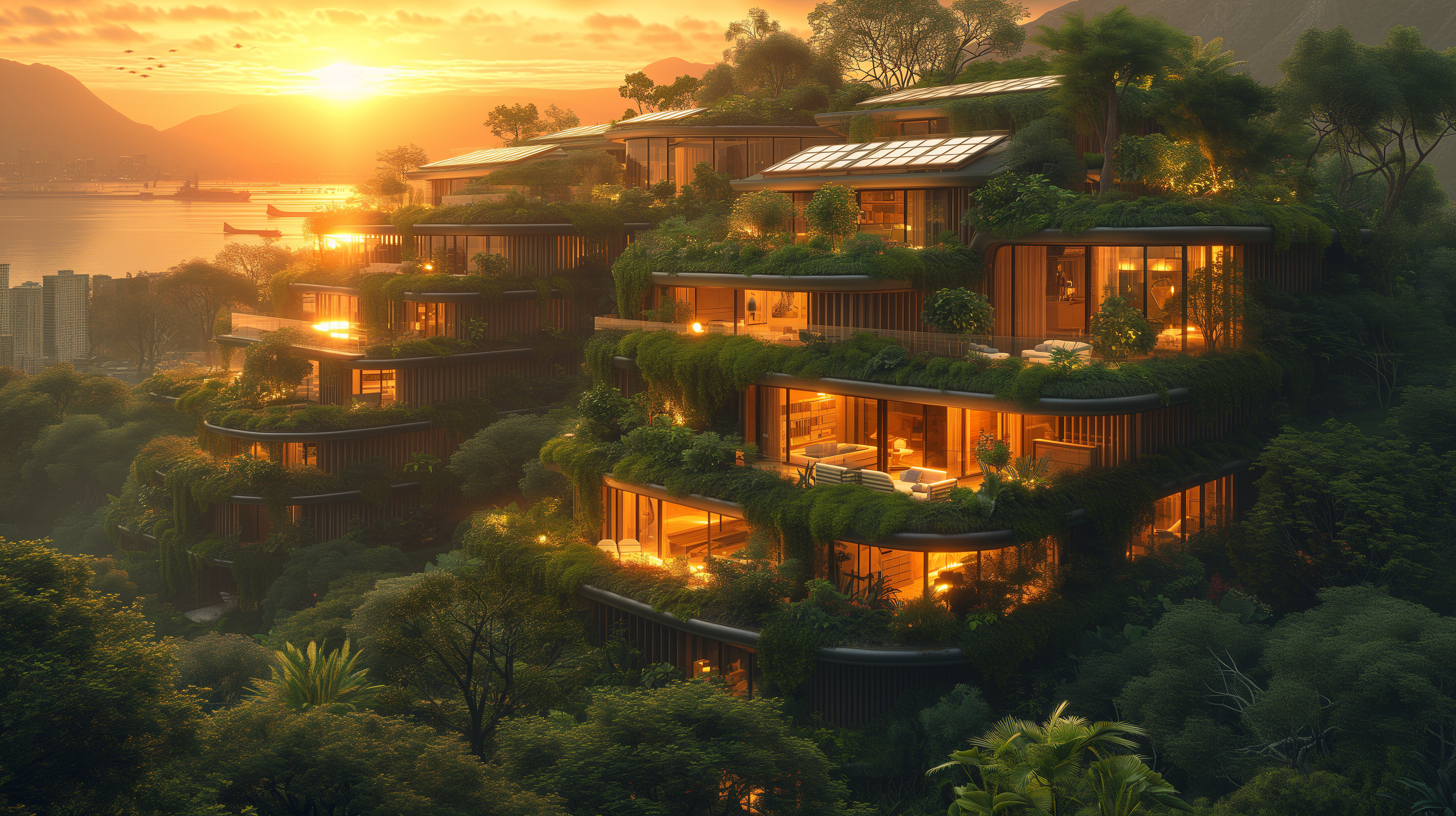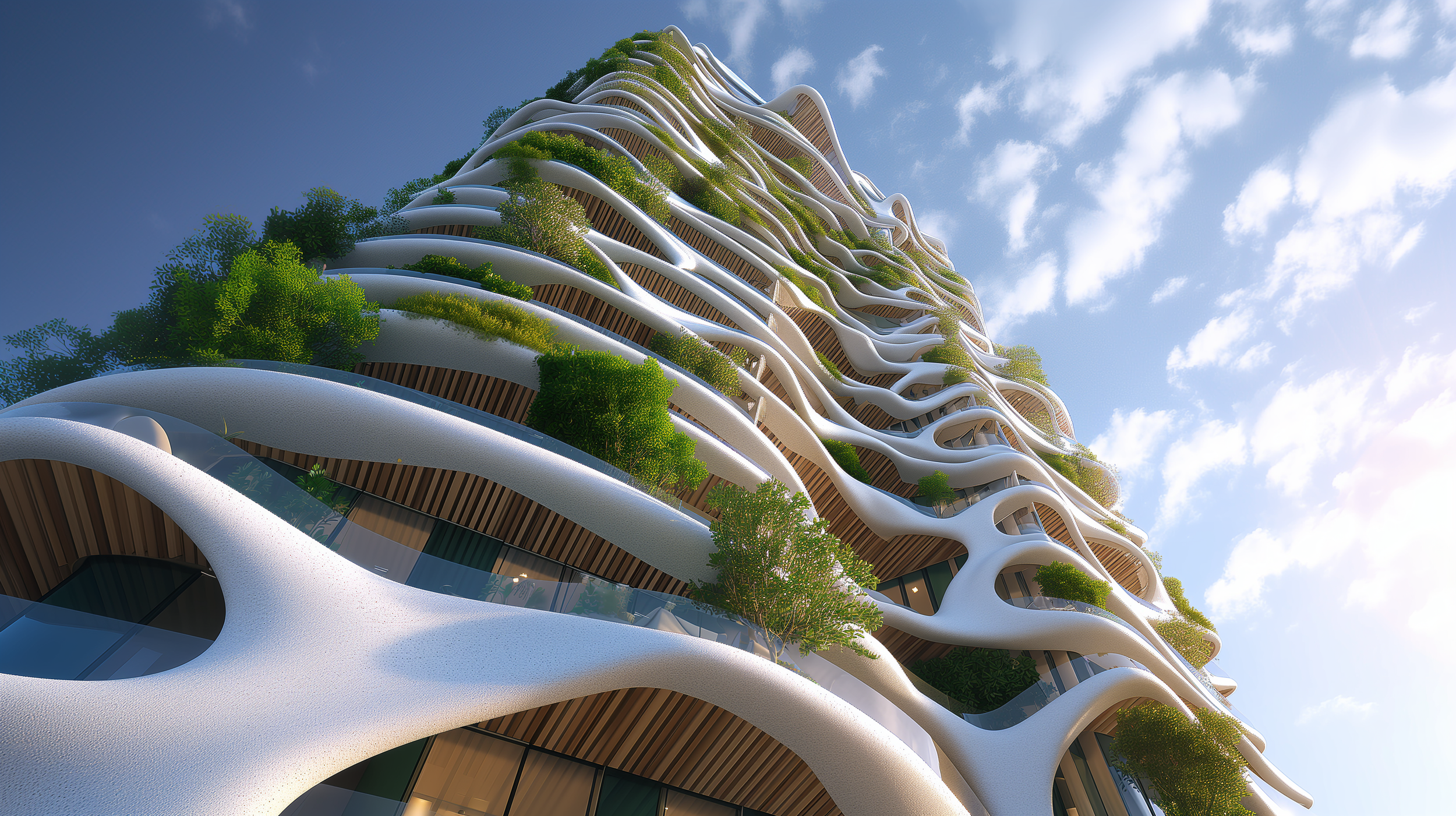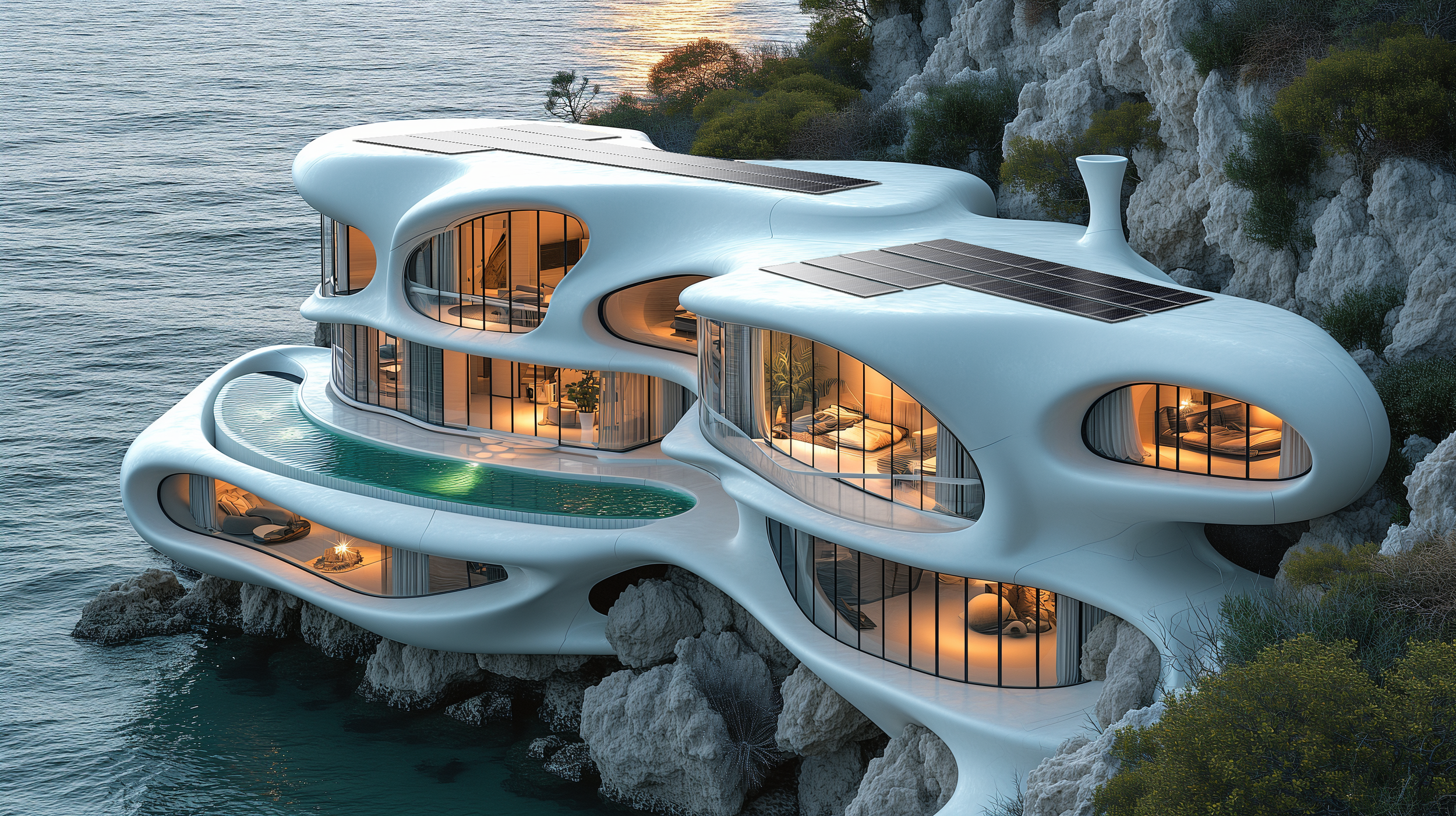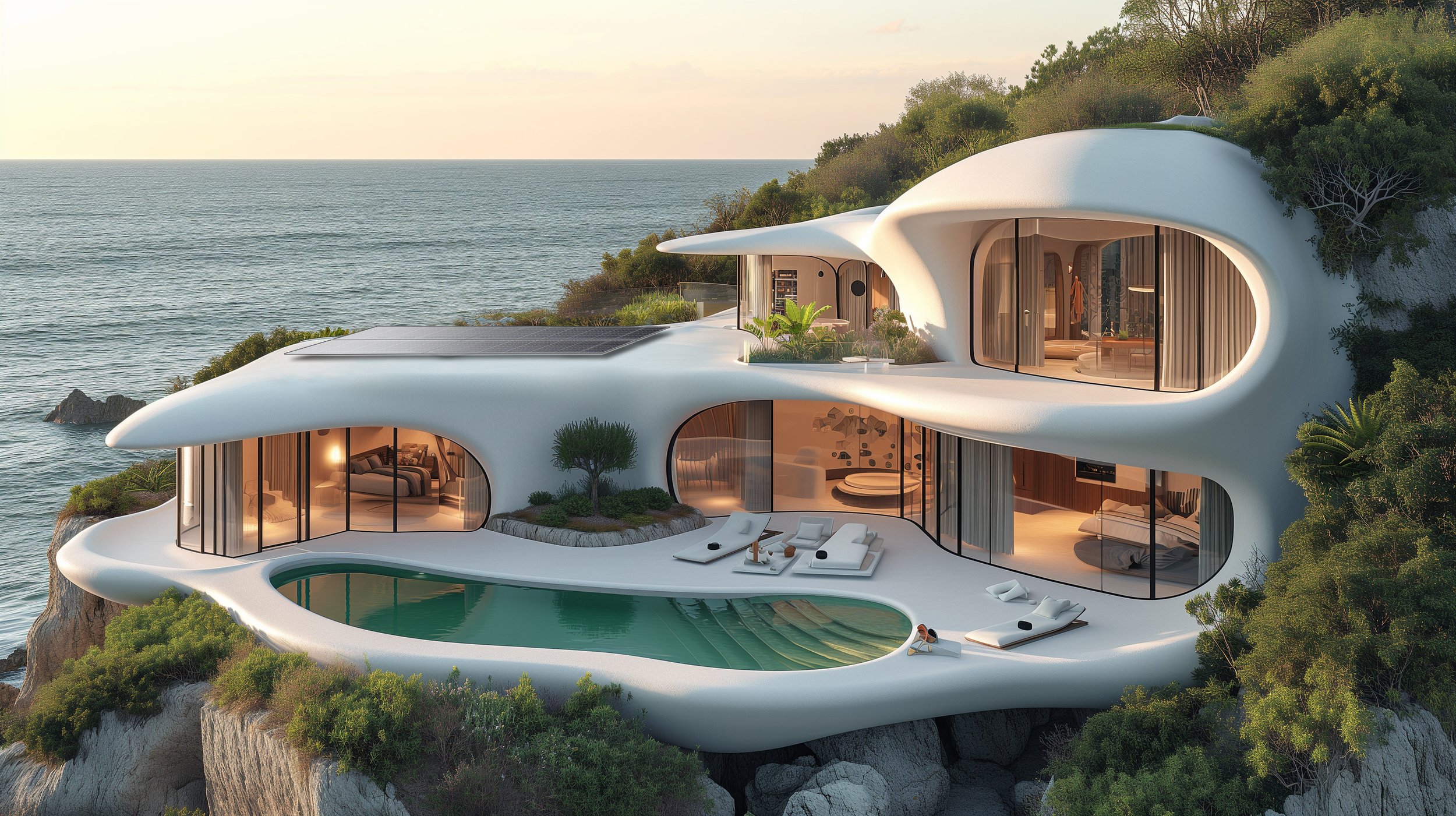We have seen the internet flooded with AI-generated images after the appearance of generative artificial intelligence tools like Midjourney, DALL·E 3 Stable Diffusion, and others. helping designers visualize and create millions of ideas to envision the architecture of the future. But can we use AI also to help us provide realistic high-end sustainable architecture solutions, which could be built with today's technologies? Carlos Bausa Martinez, a Spanish architect, Senior Associate, and Head of Sustainability at Zaha Hadid Architects, explores the use of AI tools as a blender to throw at it everything we know from sustainability to propose radically different solutions for green architecture that could help create new formal languages adapted to cope with the current climate crisis we are living in. Sustainable materials, like negative carbon concretes, stone, or passive design solutions, can be described in text format and introduced in AI consoles as “prompts” that can produce unexpected and aesthetically interesting results, defying the current sustainable architecture solutions we see in the market, very often considered boring or not useful for high-end commercial and residential architecture.
AI-01 houses series. Climate zone selection.
Very often, international firms of architects have the chance to select and participate in competitions from different regions around the world. Multiple locations in the world benefit from mild climates, with average temperatures falling in the comfort range between 16 and 25 degrees. Selecting competitions in these areas could be a strategic decision to produce new buildings and reduce the need for centralized HVAC systems. Using passive systems such as natural ventilation, underground spaces, or deep overhangs for shading the buildings can reduce the overall carbon footprint associated with the operational life of the building. The AI-01 house series explores the possibility of developing houses integrated into natural-looking spaces, taking advantage of the thermal inertia of stone or "green concrete" solutions. It aims to be built in a climate zone that does not require enclosed spaces, windows, or complex facades, allowing natural ventilation and passive shading.
AI-02 Series. Vegetation integration
Vegetated facades and roofs that use xeriscaping solutions in dry climates or just local autochthonous plants in locations with frequent rains could drastically benefit the bioclimatic behaviour of a building with minimal maintenance. The AI-02 luxury house series exploits this logic and is conceived as an organic style of architecture that could integrate natural elements on every surface. This would help regulate the temperature passively, provide better insulation, and mitigate the heat island effect by reducing temperatures through the evaporative cooling effect of the plants. On the other hand, this regenerative architectural solution could reinforce the missing link with nature, restoring biodiversity.
AI-03 houses series. Solar control
The current market for high-rise buildings is worldwide dominated by fully glazed towers. We often overlook the fact that fully glazed buildings are incredibly energy-inefficient due to the thermal loses over winter and solar heat gains in summer. Therefore, the AI-03 explores a design language that considers overhangs and low window-to-wall ratios to mitigate solar gains, controling the amount of sun that can overheat a building. Reducing thermal exchange allows buildings to become more energy-efficient, losing less heat in winter and reducing solar gains in summer. Additionally, the combination of shading elements, light-colored materials, and vegetation on facades and roofs helps reducing the heat island effect. This leads to passively cooling the city environments where the buildings could be inserted.
AI-04 house series. Negative carbon concrete
Concrete seems to be the most common and widely used material for structural solutions. Therefore, shifting to green concrete options with a negative carbon footprint could be the solution in the future of construction. Currently, timber and magnesium oxide cement are the best options for low-carbon architecture when it comes to structure and cladding elements. The AI-04 series was developed, targeting the use of wood and green concrete to define new design languages with a certain nostalgia for brutalist architecture. These structures could benefit from the high thermal mass of concrete to create better insulation and fresher buildings in locations that could be affected by warm climates. The integration of vegetation would help to reduce heat and its effects while restoring biodiversity, which could be further enhanced by greywater recycling and rainwater capture, utilizing the surfaces of the building to guide water to underground water tanks. The reduced amount of glazing in these typologies would help minimize the need for air conditioning and heating, making them even more energy-efficient.
AI-05 house series. Renewables integration and heat island effect mitigation.
This proposal for high-end luxury houses was developed taking into consideration multiple sustainable strategies, including the integration of solar panels and materials that could help reduce the heat island effect. Light-colored stone cladding or white-coated materials with an organic look would reflect heat during the hottest periods of the year, thereby reducing the overall temperature of the surroundings. This, in turn, would have a direct impact on cooling load reductions. On the other hand, recessed windows would mitigate solar exposure on the facades, helping to reduce solar heat gains. An interesting observation is that AI engines often exhibit a bias for high levels of glazing, especially when the terms "high-end" or "luxury house" are introduced. This bias can be mitigated by specifying clearer percentages for the glass-to-wall ratio. This phenomenon reflects the current trend in the luxury homes market, which tends to prioritize maximizing views over creating energy-efficient facades. However, achieving the same level of views can be possible with lower glass-to-wall ratios..
Conclusions of this study
The use of AI tools can significantly contribute to generating and envisioning new solutions that blend various sustainable design strategies. This enables architects to think outside the box when proposing new formal languages that integrate all the requirements from sustainability certificates such as LEED or other standards. This could lead to new, original solutions to propose more iconic architectures worthy of preservation. While each architect has their style and preferences, AI generative art tools are definitively a great aid for architects to visualize new ideas that can be reverse-engineered and used as a source of inspiration for all sorts of projects.

















